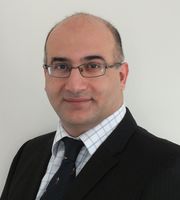Wellington > Private Hospitals & Specialists > Southern Cross Hospitals >
Southern Cross Wellington Hospital - Gastrointestinal Procedures
Private Surgical Service, Gastroenterology, General Surgery, Hepatology
Description
At Southern Cross Hospital in Wellington we want you to feel well cared for and that you leave our hospital satisfied with the care you have received. A hospital visit can be an anxious time and we will do all we can to make your experience a comfortable and positive one. A very capable team will take care of you.
Investing in quality
At our Wellington hospital, our promise is a quality-driven service. We deliver quality care, not only to Southern Cross members, but also to patients with other private medical insurers.
Increasingly, we are providing services to those who pay for surgery themselves, and to patients funded by ACC and through other specific public funding arrangements.
Whilst in our Wellington hospital, patients can expect:
- a professional, caring nursing team, whose focus is on the patients’ wellbeing and comfort
- comfortable private rooms for overnight stay, with a large ensuite, television and radio facilities
- nourishing, quality meals for overnight patients (with attention to your special dietary needs on request)
- a modern, well-equipped day-stay facility for those not requiring overnight stay
- support from our team to ensure that from admission to discharge, the administrative procedures run as smoothly as possible
- flexible visiting hours and visiting arrangements to ensure a restful environment for all of our patients
- free parking facilities.
As demand for new services grows within the Wellington region, we continue to invest in our facilities to ensure that we respond to the needs of specialists and patients in the greater Wellington region and beyond.
Gastroenterology/Endoscopy Surgery is provided by :
- Mr Alex Dalzell - General Surgeon & Endoscopist
- Mr A Reddy - General Surgeon & Endoscopist
- Dr Sophia Savva - Gastroenterologist
- Mr Ali Shekouh - General, Colorectal & Laparoscopic Surgeon & Endoscopist
- Mr Gary Stone - General & Laparoscopic Surgeon & Endoscopist
These specialists currently consult at our facilities in Wellington are:
- Mr Alex Dalzell - General Surgeon & Endoscopist
- Mr A Reddy - General Surgeon & Endoscopist
- Dr Sophia Savva - Gastroenterologist
- Mr Ali Shekouh - General, Colorectal & Laparoscopic Surgeon & Endoscopist
- Mr Gary Stone - General & Laparoscopic Surgeon & Endoscopist
Consultants
-

Dr Alex Dalzell
General & Colorectal Surgeon & Endoscopist
-

Mr Amit Reddy
General Surgeon and Endoscopist
-

Dr Sophia Savva
Gastroenterologist
-

Mr Ali Shekouh
General, Colorectal & Laparoscopic Surgeon & Endoscopist
-

Mr Gary Stone
General & Laparoscopic Surgeon & Endoscopist
Procedures / Treatments
Gastro-oesophageal Reflux Disease (GERD) occurs when the valve between the stomach and the lower end of the oesophagus is not working properly. Laparoscopic Nissen Fundiplication is a surgical procedure for GERD that involves wrapping the top part of the stomach (fundus) around the lower end of the oesophagus. The valve between the stomach and the oesophagus is also replaced or repaired.
Gastro-oesophageal Reflux Disease (GERD) occurs when the valve between the stomach and the lower end of the oesophagus is not working properly. Laparoscopic Nissen Fundiplication is a surgical procedure for GERD that involves wrapping the top part of the stomach (fundus) around the lower end of the oesophagus. The valve between the stomach and the oesophagus is also replaced or repaired.
Gastro-oesophageal Reflux Disease (GERD) occurs when the valve between the stomach and the lower end of the oesophagus is not working properly.
Laparoscopic: several small incisions (cuts) are made in the lower right abdomen (stomach) and a narrow tube with a tiny camera attached (laparoscope) is inserted. This allows the surgeon a view of the appendix and, by inserting small surgical instruments through the other cuts, the appendix can be removed. Open: an incision is made in the lower right abdomen and the appendix removed.
Laparoscopic: several small incisions (cuts) are made in the lower right abdomen (stomach) and a narrow tube with a tiny camera attached (laparoscope) is inserted. This allows the surgeon a view of the appendix and, by inserting small surgical instruments through the other cuts, the appendix can be removed. Open: an incision is made in the lower right abdomen and the appendix removed.
Laparoscopic: several small incisions (cuts) are made in the lower right abdomen (stomach) and a narrow tube with a tiny camera attached (laparoscope) is inserted. This allows the surgeon a view of the appendix and, by inserting small surgical instruments through the other cuts, the appendix can be removed.
Open: an incision is made in the lower right abdomen and the appendix removed.
Laparoscopic: several small incisions (cuts) are made in the abdomen (stomach) and a narrow tube with a tiny camera attached (laparoscope) is inserted. This allows the surgeon a view of the gallbladder and, by inserting small surgical instruments through the other cuts, the gallbladder can be removed. Open: an abdominal incision is made and the gallbladder removed.
Laparoscopic: several small incisions (cuts) are made in the abdomen (stomach) and a narrow tube with a tiny camera attached (laparoscope) is inserted. This allows the surgeon a view of the gallbladder and, by inserting small surgical instruments through the other cuts, the gallbladder can be removed. Open: an abdominal incision is made and the gallbladder removed.
Laparoscopic: several small incisions (cuts) are made in the abdomen (stomach) and a narrow tube with a tiny camera attached (laparoscope) is inserted. This allows the surgeon a view of the gallbladder and, by inserting small surgical instruments through the other cuts, the gallbladder can be removed.
Open: an abdominal incision is made and the gallbladder removed.
Laparoscopic: several small incisions (cuts) are made in the abdomen and a narrow tube with a tiny camera attached (laparoscope) is inserted. This allows the surgeon a view of the colon (also called bowel or large intestine) and, by inserting small surgical instruments through the other cuts, part or all of the colon can be removed. The two healthy ends of the colon are stitched back together (resected). Open: an abdominal incision is made and part or all of the colon is removed.
Laparoscopic: several small incisions (cuts) are made in the abdomen and a narrow tube with a tiny camera attached (laparoscope) is inserted. This allows the surgeon a view of the colon (also called bowel or large intestine) and, by inserting small surgical instruments through the other cuts, part or all of the colon can be removed. The two healthy ends of the colon are stitched back together (resected). Open: an abdominal incision is made and part or all of the colon is removed.
Laparoscopic: several small incisions (cuts) are made in the abdomen and a narrow tube with a tiny camera attached (laparoscope) is inserted. This allows the surgeon a view of the colon (also called bowel or large intestine) and, by inserting small surgical instruments through the other cuts, part or all of the colon can be removed. The two healthy ends of the colon are stitched back together (resected).
Open: an abdominal incision is made and part or all of the colon is removed.
A long, narrow tube with a tiny camera attached (colonoscope) is inserted into your anus and then moved along the entire colon. This allows the surgeon a view of the lining of the colon. Sometimes a biopsy (small piece of tissue) will be taken during the procedure for later examination at a laboratory. Polyps (small growths of tissue projecting into the bowel) may be removed during a colonoscopy.
A long, narrow tube with a tiny camera attached (colonoscope) is inserted into your anus and then moved along the entire colon. This allows the surgeon a view of the lining of the colon. Sometimes a biopsy (small piece of tissue) will be taken during the procedure for later examination at a laboratory. Polyps (small growths of tissue projecting into the bowel) may be removed during a colonoscopy.
A long, narrow tube with a tiny camera attached (colonoscope) is inserted into your anus and then moved along the entire colon. This allows the surgeon a view of the lining of the colon. Sometimes a biopsy (small piece of tissue) will be taken during the procedure for later examination at a laboratory. Polyps (small growths of tissue projecting into the bowel) may be removed during a colonoscopy.
Partial: the diseased part of the stomach is removed and the remaining section is reattached to the oesophagus (food pipe) or small intestine. Total: all of the stomach is removed and the oesophagus is attached directly to the small intestine.
Partial: the diseased part of the stomach is removed and the remaining section is reattached to the oesophagus (food pipe) or small intestine. Total: all of the stomach is removed and the oesophagus is attached directly to the small intestine.
Partial: the diseased part of the stomach is removed and the remaining section is reattached to the oesophagus (food pipe) or small intestine.
Total: all of the stomach is removed and the oesophagus is attached directly to the small intestine.
A long, flexible tube with a tiny camera attached (gastroscope) is inserted through your mouth and moved down your digestive tract. This allows the surgeon a view of the upper part of your digestive tract i.e. oesophagus (food pipe), stomach and duodenum (top section of the small intestine). Sometimes a biopsy (small tissue sample) will need to be taken during the procedure for later examination at a laboratory.
A long, flexible tube with a tiny camera attached (gastroscope) is inserted through your mouth and moved down your digestive tract. This allows the surgeon a view of the upper part of your digestive tract i.e. oesophagus (food pipe), stomach and duodenum (top section of the small intestine). Sometimes a biopsy (small tissue sample) will need to be taken during the procedure for later examination at a laboratory.
A long, flexible tube with a tiny camera attached (gastroscope) is inserted through your mouth and moved down your digestive tract. This allows the surgeon a view of the upper part of your digestive tract i.e. oesophagus (food pipe), stomach and duodenum (top section of the small intestine). Sometimes a biopsy (small tissue sample) will need to be taken during the procedure for later examination at a laboratory.
Laparoscopic: several small incisions (cuts) are made in the abdomen (stomach) and a narrow tube with a tiny camera attached (laparoscope) is inserted. This allows the surgeon to view the rectum and, by inserting small surgical instruments through the other cuts, part or all of the rectum can be removed. Open: an abdominal incision is made and part or all of the rectum removed.
Laparoscopic: several small incisions (cuts) are made in the abdomen (stomach) and a narrow tube with a tiny camera attached (laparoscope) is inserted. This allows the surgeon to view the rectum and, by inserting small surgical instruments through the other cuts, part or all of the rectum can be removed. Open: an abdominal incision is made and part or all of the rectum removed.
Laparoscopic: several small incisions (cuts) are made in the abdomen (stomach) and a narrow tube with a tiny camera attached (laparoscope) is inserted. This allows the surgeon to view the rectum and, by inserting small surgical instruments through the other cuts, part or all of the rectum can be removed.
Open: an abdominal incision is made and part or all of the rectum removed.
Laparoscopic: involves cutting the spleen free from its attachments and removing it through several small incisions (cuts) in the upper left abdomen. Open: an incision is made in the upper left abdomen, the diseased or damaged spleen is then separated from its attachments and removed.
Laparoscopic: involves cutting the spleen free from its attachments and removing it through several small incisions (cuts) in the upper left abdomen. Open: an incision is made in the upper left abdomen, the diseased or damaged spleen is then separated from its attachments and removed.
Laparoscopic: involves cutting the spleen free from its attachments and removing it through several small incisions (cuts) in the upper left abdomen.
Open: an incision is made in the upper left abdomen, the diseased or damaged spleen is then separated from its attachments and removed.
Visiting Hours
- Weekdays: 8.00am to 8.00pm
- Weekends: 8.00am to 8.00pm
Parking
Free patient parking is provided.
Contact Details
Southern Cross Wellington Hospital
Wellington
-
Phone
04 910 2160
Healthlink EDI
wgtnmspc
Email
Website
90 Hanson Street
Newtown
Wellington 6021
Street Address
90 Hanson Street
Newtown
Wellington 6021
Postal Address
PO Box 7233
Newtown
Wellington 6242
Was this page helpful?
This page was last updated at 2:36PM on October 10, 2024. This information is reviewed and edited by Southern Cross Wellington Hospital - Gastrointestinal Procedures.

